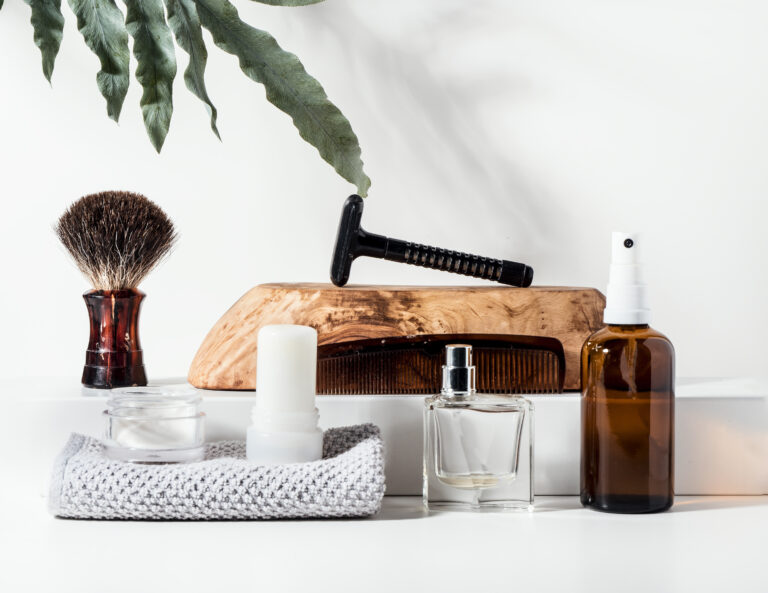Microtrends Are Reshaping Global Sourcing
In today’s sourcing landscape, the biggest opportunities aren’t always found in mass-market categories. Increasingly, they’re emerging from microtrends — small, fast-moving shifts in consumer behavior that carry outsized commercial impact. These trends are hyper-targeted, lifestyle-driven, and deeply personal, yet they’re scaling globally thanks to digital commerce and agile supply chains.
According to McKinsey’s 2025 sourcing outlook, 72% of procurement leaders are now prioritizing agility and responsiveness to niche demand. For sourcing professionals, this signals a strategic imperative: those who identify and act on microtrends early are better positioned to capture growth, build loyalty, and differentiate their portfolios.
From Mass Appeal to Micro Demand: The New Sourcing Mindset
The sourcing game has changed. Where volume and broad appeal once dominated procurement strategy, today’s decisions are shaped by personalization, wellness, and sustainability — the same forces Worth Global Style Network (WGSN) forecasts will drive global consumer loyalty through 2032. Deloitte’s 2025 report found that 63% of consumers now prefer brands aligned with their personal values and lifestyle, up from 48% just three years ago.
This shift is fueling a new kind of sourcing: category-first, insight-led, and built around emerging consumer identities. Gartner predicts that by 2026, over 60% of sourcing teams will use AI-powered personalization tools to identify niche product opportunities. Already, 58% of sourcing leaders are adopting broader AI-driven tools to sharpen category strategy and anticipate demand.
Sourcing professionals are no longer just chasing trends — they’re curating assortments that speak directly to micro-communities. Whether it’s grooming gadgets for Gen Z men or sleep-enhancing tech for wellness-driven consumers, the goal is clear: deliver relevance, not just reach.
And the payoff? Higher margins, faster turnover, and stronger brand alignment. Let’s explore four microtrend categories that aren’t just trending — they’re poised to scale globally.
Category Deep Dive: 4 Niche Segments with Macro Potential
Pet Tech & Accessories: From Companion Care to Smart Living
The global pet accessories market is projected to grow from $25.1 billion in 2025 to $49.6 billion by 2034, reflecting a CAGR of 7.9%. This surge is driven by pet humanization—where pets are treated as family members—and the rise of smart accessories that enhance pet health, safety, and comfort. In the U.S., 70% of households now own pets, while Asia-Pacific is seeing the fastest growth in pet ownership, especially in urban centers where premiumization and tech adoption are accelerating. Spending per pet continues to rise, with U.S. consumers investing nearly $150 billion in the broader pet industry in 2023.
Smart accessories—including GPS-enabled collars, automated feeders, and health trackers—now account for 29% of total category growth. GPS dog fences, for example, have seen a 300% search growth over five years, offering satellite-based containment without buried wires. AirTag collars—which allow pet owners to track lost pets using Apple’s ecosystem—have seen search interest surge by 8,400% from 2020 to 2025, according to Google Trends, signaling strong consumer interest in tech-integrated safety. Automated feeders and health monitoring devices are also gaining traction, especially among Gen Z pet owners who prioritize convenience and data-driven care.
Beyond tech, comfort and travel accessories are booming. Dog car beds have seen a 117% surge in search growth, reflecting the fact that 78% of American pet owners travel with their pets annually. Meanwhile, collagen sticks—chewable treats that support joint health—have seen a 533% surge in search interest, tapping into the wellness trend for aging pets. The shift toward premium pet care is driving demand for accessories that balance smart design with emotional value, as pet owners seek solutions that support comfort, safety, and deeper connection.
Connect with quality suppliers offering pet tech and wellness accessories as demand accelerates for emotionally resonant, smart, and travel-ready products. With strong growth across different categories, this segment offers high engagement, premium margins, and repeat sourcing potential.

Men’s Grooming Gadgets: Precision Meets Premiumization
Men’s grooming is undergoing a transformation. Once considered niche, it’s now a global powerhouse—expected to reach $376.4 billion by 2030, growing at 8.0% CAGR. Asia-Pacific leads the charge, accounting for 38.6% of the market share, with Gen Z and millennial men driving demand for multifunctional, tech-enhanced grooming tools.
This shift is especially visible in urban Asia, where self-expression, wellness, and premium self-care routines are redefining male grooming norms. Gen Z and millennial men are at the forefront of this transformation, embracing multifunctional, tech-enhanced grooming tools that align with their fast-paced, image-conscious lifestyles. In urban centers like Seoul, Tokyo, and Shanghai, grooming is no longer just about hygiene—it’s a form of identity and status.
Social media platforms such as Xiaohongshu and Instagram have amplified this trend, with male beauty influencers normalizing skincare, fragrance layering, and high-tech grooming routines. Brands are responding with smart razors, ergonomic trimmers, and skincare devices that combine performance with sleek design. The demand for premium men’s fragrances is also surging, with Asia-Pacific expected to see an 8.2% CAGR in high-end scent sales through 2027, outpacing all other regions.
Electric shavers, skincare devices, and grooming kits are no longer luxury items—they’re daily essentials. Buyers are sourcing products that combine performance with clean-label appeal, tapping into trends like natural ingredients, ergonomic design, and smart functionality. This shift reflects a broader redefinition of masculinity—one that embraces wellness, aesthetics, and individuality. For buyers, it signals a clear opportunity to source grooming products that are not only functional but aspirational.
For buyers seeking high-margin products with strong brand loyalty and global relevance, men’s grooming is a strategic bet. Discover quality suppliers in men’s grooming and beauty tech. With rising consumer spend and a growing supplier base, this segment is primed for premium sourcing strategies.
Sleep Optimization Tools: Wellness Starts with Rest
Sleep tech is one of the fastest-growing segments in health and wellness, forecasted to reach $134.7 billion by 2034, up from $29.3 billion in 2025, with a CAGR of 18.5%. The drivers? A global rise in sleep disorders, increased awareness of sleep’s role in overall health, and the integration of smart technology into everyday rest routines.
Over 425 million people worldwide are affected by sleep apnea, and 1 in 3 adults report poor sleep quality at least three nights per week, according to ResMed’s 2025 Global Sleep Survey. Stress, anxiety, and mental health conditions are the top disruptors, especially in urban Asia-Pacific markets where sleep deprivation is linked to reduced productivity and emotional well-being. Reflecting this urgency, the global sleep economy surged to $585 billion in 2024, is projected to reach $706.7 billion in 2025, and is forecast to hit $1 trillion by 2033, with a CAGR of 8.5% from 2026 onward. As sleep becomes central to holistic health, consumers are embracing products that support deeper rest, physical recovery, and emotional well-being.
As sleep health becomes a top-tier wellness priority, sourcing trends are shifting to meet this demand. Buyers are responding with targeted wellness products that support rest and recovery. The U-shaped pillow market alone is projected to grow at a CAGR of 9.2%, reaching $2.5 billion by 2033, driven by demand for ergonomic sleep aids and pain relief. Anti-snoring devices and massage pillows are also gaining traction, with sleep aids overall expected to hit $5.8 billion by 2026, up from $4.98 billion in 2023. Products like leg massagers and air pressure massage mattresses are being positioned not just for comfort, but as therapeutic tools for circulation and deep relaxation.
If you’re sourcing for wellness-driven consumers who prioritize rest and recovery, sleep optimization is a high-growth segment with both scale and purpose. Explore solutions like pillow massagers, USB heating neck pillows etc. that support deeper rest and physical recovery. With strong growth projections and rising consumer urgency, it’s a strategic sourcing opportunity for 2026 and beyond.
Smart Fitness & Yoga Gear: Wellness Goes Portable
Fitness sourcing is evolving fast, with compact, tech-enabled gear leading the charge. The global smart fitness market is projected to grow from $88.8 billion in 2025 to $189.1 billion by 2032, at a CAGR of 11.4%.
As hybrid lifestyles blur the lines between work, fitness, and wellness, demand for portable, multifunctional health tools is surging. Buyers are responding with wellness-on-the-go products like body fat analyzers, smart bracelets, massage guns, yoga mats, and thigh trainers. The smart fitness device market is expected to reach $16.7 billion by 2026, with wearables like pedometers and smart bracelets driving adoption in Asia-Pacific and North America. Massage guns are also gaining traction, with the category projected to grow at a CAGR of 8.4% through 2028, fueled by rising interest in recovery tech and home-based wellness routines. Online sales now account for 57.7% of smart fitness purchases, driven by demand for convenience and personalization. Fitness trackers alone are expected to hold 44.9% of market share in 2025.
Yoga mats and resistance trainers continue to benefit from the rise of at-home fitness, with ergonomic and eco-friendly designs attracting younger, wellness-focused consumers. Global yoga participation has surged since 2020, boosting demand for gear that supports both physical and mental well-being. The yoga and exercise mats market is projected to grow from $14.17 billion in 2025 to $23.71 billion by 2033. Over 70% of users now prefer home workouts, and 55% actively seek non-toxic, sustainable mats—driving demand for PVC-free, natural rubber, and TPE-based designs. Resistance trainers are also rising, with multifunctional, travel-friendly formats gaining traction among Gen Z and millennial buyers who prioritize flexibility and wellness integration.
For buyers looking to ride the wellness wave with scalable, tech-integrated products, this category is a must-watch. Discover products like eco-friendly yoga mats, comfortable yoga gear, and vibrating massage rollers etc. designed for holistic health routines. With rising demand for compact, tech-enabled wellness gear, this segment is primed for strategic sourcing in 2026 and beyond.

Buyer Takeaways: How to Source Smarter in 2026
Sourcing in 2026 isn’t just about following trends—it’s about anticipating them. Gartner’s procurement insights show that 58% of sourcing leaders are adopting AI-driven tools to sharpen category strategy and stay ahead of demand curves.
Here’s how to source smarter:
- Prioritize high-CAGR categories like sleep tech and smart fitness
Focus on categories with strong growth momentum and built-in consumer urgency. Sleep tech and smart fitness are driven by health-conscious buyers who prioritize recovery, stress relief, and performance.
Tips to act smarter:
- Track subcategories with double-digit CAGR (e.g., massage guns, sleep trackers, yoga mats)
- Look for products that support daily use and habit formation — these drive repeat purchases
- Focus on products that are selling well online or getting viral appeal—like neck and shoulder massagers or smart bracelets.
- Use behavioral data to identify high-performing products
Behavioral signals—like search trends, reviews, and repeat purchases—reveal which products solve real problems and fit into evolving routines. These insights help you source with precision, not guesswork.
Tips to act smarter:
- Track what consumers are searching for, saving, and reviewing to uncover rising interest and unmet needs
- Spot products that fit into emerging routines—especially those shaped by wellness, remote work, or digital lifestyles
- Look for emotional relevance: products that feel personal, reduce friction, or support identity (e.g., wellness wearables, compact home fitness tools)
- Diversify with wellness, tech, and personalization-led products
Expanding into lifestyle-driven categories helps reduce inventory risk and build stronger consumer loyalty. Products that feel tailored to individual needs tend to stick—especially when they support everyday routines and long-term goals.
Tips to act smarter:
- Mix proven sellers with emerging formats—like pet care accessories, men’s grooming kits, or portable fitness gear
- Source items that reflect hybrid living: compact, multifunctional, and designed for both home and on-the-go use
- Prioritize products that feel personal—whether through adaptive features, inclusive design, or values-based branding (e.g., sustainable materials, gender-neutral packaging)
Companies that act early on fast-moving consumer trends—and use real-time data to guide sourcing—are projected to see significantly stronger revenue growth, according to PwC’s 2030 supply chain report. Niche products, in particular, offer higher margins and faster turnover by serving unmet needs with less competition and deeper emotional appeal. When backed by agile supply chains and targeted marketing, they can scale quickly and build lasting loyalty.

Microtrends Will Define the Next Decade
Microtrends aren’t just shaping 2026—they’re defining the sourcing landscape through 2030 and beyond. According to WGSN, personalization, wellness, and sustainability will be key forces shaping consumer behavior and brand loyalty across global markets. Meanwhile, Gartner predicts that 70% of large organizations will adopt AI-based forecasting to predict future demand by 2030.
This means sourcing will become more predictive—powered by AI insights that reveal not just what’s trending, but who it’s trending with. As a result, buyers can confidently invest in more personalized, niche-driven products that align with specific consumer segments and emerging behaviors.
The opportunity is clear. The time to act is now.
Source Smarter with hktdc.com Sourcing
To capture these microtrend opportunities, buyers need a platform built for agility, scale, and global reach. hktdc.com Sourcing offers tools that help buyers move fast—from AI-powered matching and multilingual communication to real-time sourcing requests and curated product discovery. Whether sourcing massage pillows or smart bracelets, the platform helps identify breakout products, connect with quality suppliers, and stay ahead of evolving consumer demand. As niche categories continue to scale, the platform helps buyers move in sync with emerging demand—not just observing the wave, but riding it. Start sourcing and send enquiries now.
Market Sizing & Growth McKinsey, Deloitte, Gartner, WGSN: Procurement agility (72% of sourcing leaders), consumer value alignment (63% in 2025), AI adoption in sourcing (60% by 2026), AI-based forecasting (70% by 2030), and consumer loyalty drivers through 2032 (personalization, wellness, sustainability).
Statista, Grand View Research, IMARC, Research&Markets: Smart fitness market ($88.8B in 2025, $189.1B by 2032), sleep tech ($29.3B in 2025, $134.7B by 2034), men’s grooming ($376.4B by 2030), pet accessories ($25.1B in 2025, $49.6B by 2034), yoga mats ($14.17B in 2025, $23.71B by 2033), and sleep economy ($706.7B in 2025, $1T by 2033).
Straits Research, Coherent Market Insights, Mordor Intelligence: Massage guns (CAGR 8.4% through 2028), U-shaped pillows (CAGR 9.2% to $2.5B by 2033), sleep aids ($5.8B by 2026), fitness trackers (44.9% market share in 2025), and online fitness sales (57.7% share).
Consumer Behavior & Trends ResMed Global Sleep Survey, PwC Supply Chain Report, Xiaohongshu, Instagram, HKTDC NewsBites: Sleep quality stats (1 in 3 adults), sleep apnea prevalence (425M globally), Gen Z grooming habits, social media influence on male beauty, and buyer urgency around wellness and personalization.
Sourcing Strategy & Buyer Tools Gartner Procurement Insights, hktdc.com Sourcing: AI-driven sourcing tools (58% adoption), category strategy optimization, supplier matching, multilingual communication, and real-time sourcing requests.







